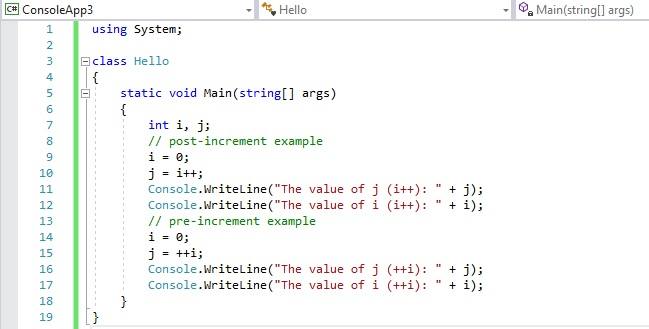In C#, you can place the increment (++) and decrement (--) operators either before or after the variable. Putting the operator before the variable is called the prefix (pre-increment) and using the operator after the variable is called postfix (post-increment). Below are the examples:
i++; // post-increment (postfix) ++i; // pre-increment (prefix) i--; // post-increment (postfix) --i; // pre-increment (prefix)
Difference Between Pre-Increment and Post-Increment in C#
There is no difference whether you use prefix or postfix form; the variable value will increase by 1. Then you must be wondering why there are two ways to do the same thing. Here is the answer, the value returned by i++ is the value of (i) before the increment takes place, whereas the value returned by ++i is the value of (i) after the increment takes place. The following is an example:
using System;
class Hello
{
static void Main(string[] args)
{
int i, j;
// post-increment example
i = 0;
j = i++;
Console.WriteLine("The value of j (i++): " + j);
Console.WriteLine("The value of i (i++): " + i);
// pre-increment example
i = 0;
j = ++i;
Console.WriteLine("The value of j (++i): " + j);
Console.WriteLine("The value of i (++i): " + i);
}
}Output
The value of j (i++): 0 The value of i (i++): 1 The value of j (++i): 1 The value of i (++i): 1 Press any key to continue . . .
You can remember in this way also, in the expression i++, the variable (i) comes first, so its value is used as the value of the expression before (i) is incremented. In the expression ++i, the operator comes first, so its operation is performed before the value of (i).



